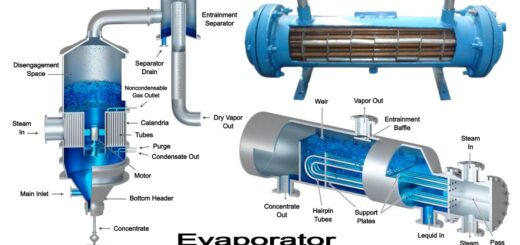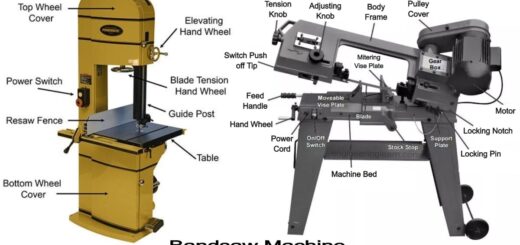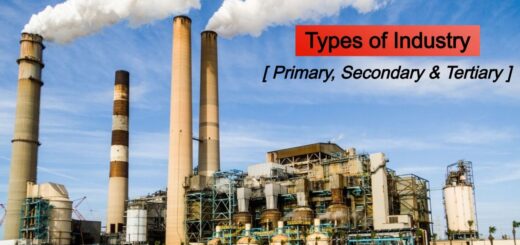5 Types of Cast Iron and Their Uses [with Composition & Properties]
![Types of Cast Iron and Their Uses [with Composition & Properties]](https://engineeringlearn.com/wp-content/uploads/2021/09/Cast-Iron-1024x539.jpg)
What is Cast Iron?
Types of Cast Iron and Their Uses [with Composition & Properties] :- A cast iron is referred to as that material which is found consisting of iron with more than 2% of carbon wherein the cast iron is found to be a versatile metal that is used in a very wide range of consumer as well as in the commercial applications.
Cast iron is found to be used in order to make weapons as well as some agriculture products from ancient times. It has found to become an increasing type of metal which is highly used in the industries. Mostly all the cast iron is found having a constituent of carbon over 2%, there are several other types of cast iron, each one having a unique property.
Types of Cast Iron
1. Gray Cast Iron: ( Types of Cast Iron )
The most common type of cast iron is known to be gray cast iron which features a graphite microstructure that consists of various small fractures. It is named in such a way as the presence of these small fractures is responsible for creating the appearance of a gray color. The gray cast iron is obtained so that the fractures can be found which open up in order to reveal the gray-colored graphite underneath the surface. On the contrary gray cast iron are not found to be as strong as steel, nor is it able to absorb the same intensity of shock as steel.
The gray cast iron is found to offer various compressive strength as steel. Which in result makes a popular choice for metal applications that can involve compressive strength.
Gray cast iron can be characterized by its properties like the graphitic microstructure which is responsible for causing fractures to the material to give a grey appearance. These are referred to as the used cast iron wherein most widely the used cast material is based on its weight. Gray cast iron is known to have very low tensile strength along with the shock resistance as compared to steel, wherein its compressive strength is found to be quite low- and medium-carbon steel comparatively. There are various physical and chemical properties that are responsible for controlling the size and shape of the graphite which flakes its presence in the microstructure which can be characterized accordingly.
2. White Cast Iron: ( Types of Cast Iron )
White cast iron are not that common as compared to the gray cast iron as white cast iron is found to be an another type of worth mentioning iron type. It is found receiving its name from its off-white colour, which in turn results of iron compounds that is known as cementite. Like the gray cast iron, white cast iron features various small fractures too.
The difference which is known is that the white cast iron is found featuring the cementite below its surface, whereas the gray cast iron is the one which features the graphite below its surface. The graphite is responsible for creating the appearance of a gray color, while the cementite is responsible for creating the appearance of a white colour. White cast iron is known to be hard which offers an excellent resistance against the abrasions.
White Cast Iron
White cast iron displays the white fractured surfaces which is found due to the presence of an iron carbide precipitate that is usually termed as cementite. As the content of the silicon lowers the cooling rate increases and thus the carbon in white cast iron is found to precipitate out of the melt as the metastable phase cementite, Fe3C, as compared to the graphite. As the iron carbide precipitates out, it is found withdrawing carbon from the original melt which moves the mixture towards one that is found to be closer to the eutectic wherein the remaining phase is found to be the lower iron-carbon austenite.
The eutectic carbides are found to be too large in order to provide the benefit which is mostly referred to as precipitation hardening by impeding the movement of dislocations with the effect of pure iron ferrite matrix. To rapidly increase the bulk hardness of any cast iron there is a need by the virtue of their own which is highly hard as well as their substantial volume fraction like the bulk hardness can be approximated by a rule of mixtures.
Challenges which white cast iron offer
White cast iron are the ones which are found offering the hardness at the expense of toughness. The material, carbide is responsible for making up a larger fraction of the material whereas the white cast iron is responsible which can reasonably be classified as a cermet. White iron is the one which is too brittle for and thus is inappropriate for usage in many structural components wherein the hardness and abrasion resistance are found to be relatively low cost as it required its usage in various applications along with the wear surfaces of slurry pumps, shell liners and lifter bars in ball mills are autogenous grinding mills, balls etc.
It is observed that cooling thick castings is found to be difficult as they do not cool fast enough and solidify the melt as white cast iron all the way through. A process of rapid cooling is mostly used in order to solidify a shell of the white cast iron, after which the remainder is found to cool slowly in order to form a core of gray cast iron. The resulting cast is referred to as a chilled casting which is found having the benefits of a hard surface accompanied with a somewhat tougher interior.
Challenges which white cast iron offer
High-chromium white iron alloys are the ones which allows massive castings to be a sand cast, as the chromium is responsible for reducing the rate of cooling which is required to produce the carbides. Chromium is known to be the one which is also responsible for the production of carbides with impressive abrasion resistance. These are known to be the ones which are included in the high-chromium alloys that attribute their superior hardness to the presence of chromium carbides.
The main form of these such types of carbides are the eutectic or primary carbides, where the quantity of iron or chromium can vary depending upon the composition of alloy. The eutectic carbides are responsible for the creation of bundles which includes hollow hexagonal rods that can grow a perpendicular to hexagonal basal plane. The hardness of such typed of carbides are found to vary within the range of 1500-1800HV
3. Ductile Cast Iron: ( Types of Cast Iron )
Ductile cast iron is also referred to as nodular cast iron which is found to be ductile cast iron is a type of soft, ductile iron alloy accompanied with a high carbon content. It is found to be typically made accompanied with the trace amounts of other compounds that can include magnesium as well as cerium. These are one amongst the trace compounds which are amongst inhibiting the speed at which the graphite grows that keeps the metal soft as well as ductile. The invention of ductile cast iron was done in the early 1940s.
Nodular cast iron are also known as the ductile cast iron which is responsible for having its graphite in the form of very tiny nodules that is accompanied with the graphite in the form of concentric layers which forms the nodules. The percentage of carbon which present is found to be 3-4% and percentage of silicon is found to be 1.8-2.8%. The quantity of chemical varies from 0.02 to 0.1% magnesium, and only 0.02 to 0.04% cerium which are found being added to such types of alloys which can slower the growth of graphite that gets precipitated by bonding to the edges of the graphite planes. The properties are found to be quite similar to the malleable iron, whereas the parts can be cast with larger sections.
4. Malleable Cast Iron: ( Types of Cast Iron )
Malleable cast iron is referred to as the one which is found to be workable. These are the ones which are typically created by using the heat treatment processes on the white cast iron. The white cast iron is mostly found to be heated and treated for around two days, after which it gets cooled. Once it gets finished, the malleable cast iron is found to be bent or manipulated in order to achieve any unique shape or size.
Malleable iron is the one which starts as a white iron casting and is thus heat treated for around a day or two at a temperature of 950 °C which then is cooled over a day or two. As a result, the carbon in iron carbide is found to transform into either graphite or ferrite plus carbon. The slow process is responsible for allowing the surface tension in order to form the graphite into spheroidal particles instead of flakes. Because of the lower aspect ratio’s impact, the spheroids are found to be relatively shorter and thus are far from one another which has a lower cross section that can propagate crack or phonon.
Malleable Cast Iron
These type of cast iron are the ones which are found having blunt boundaries that gets opposed to flake all that which alleviates concentration of the stress problems that are found in the grey cast iron. Most commonly such properties of malleable cast iron are likely to those of mild steel. There is a limiting factor which reveals how large a part can be casted for a malleable iron made from white cast iron.
Mostly all the malleable iron melts in order to increase how much silicon can be added. For white iron, there is a need for boron to be added in order to aid in the production of malleable iron which is responsible for reducing the coarsening effect of bismuth.
5. Alloy Cast Iron : ( Types of Cast Iron )
The properties of the cast iron are known to be changed which is usually done by adding various alloying elements that are also known to be alloyants. Silicon is the referred to as one of the most important alloyant as it is the one which forces carbon out of solution. A very low percentage of silicon is responsible for allowing the carbon which remains in the form of solution of iron carbide and the production of white cast iron. A very high percentage of silicon is found being the cause for forcing carbon out of solution which is found to form graphite as well as the production of grey cast iron.
Various other alloying agents like manganese, chromium, molybdenum, titanium and vanadium counteracts silicon which is responsible for promoting the retention capacity of the carbon which forms those carbides. Nickel and copper are those materials which are responsible for increasing the strength as well as the machinability whereas it does not change the amount of graphite formed. The carbon is found being present in the form of graphite that can result in a softer iron which can also reduce the shrinkage and thus lower the strength as well as also decrease the density.
Alloying Elements
Sulphur is largely a well-known contaminant which is present in the form of iron sulphide that is responsible for preventing the formation of graphite and which also increases the hardness. The problem which is with sulphur is that it is responsible for making molten cast iron viscous, which is responsible for causing defects. In order to counter the effects of sulphur, manganese is found to be added as the two form into a manganese sulphide instead of an iron sulphide.
Nickel is found to be known as one of the most common alloying element which is found refining the pearlite as well as graphite structure which is responsible for improving the toughness, and evens out the hardness differences between the thicknesses of the section. The presence of Chromium is found responsible for the purpose of addition of small amounts in order to reduce the amount of free graphite which produces chill, and as it is known to be a powerful carbide stabilizer, nickel is mostly added in the conjunction. A very small amount of tin needs to be added as a substitute for 0.5% chromium.













